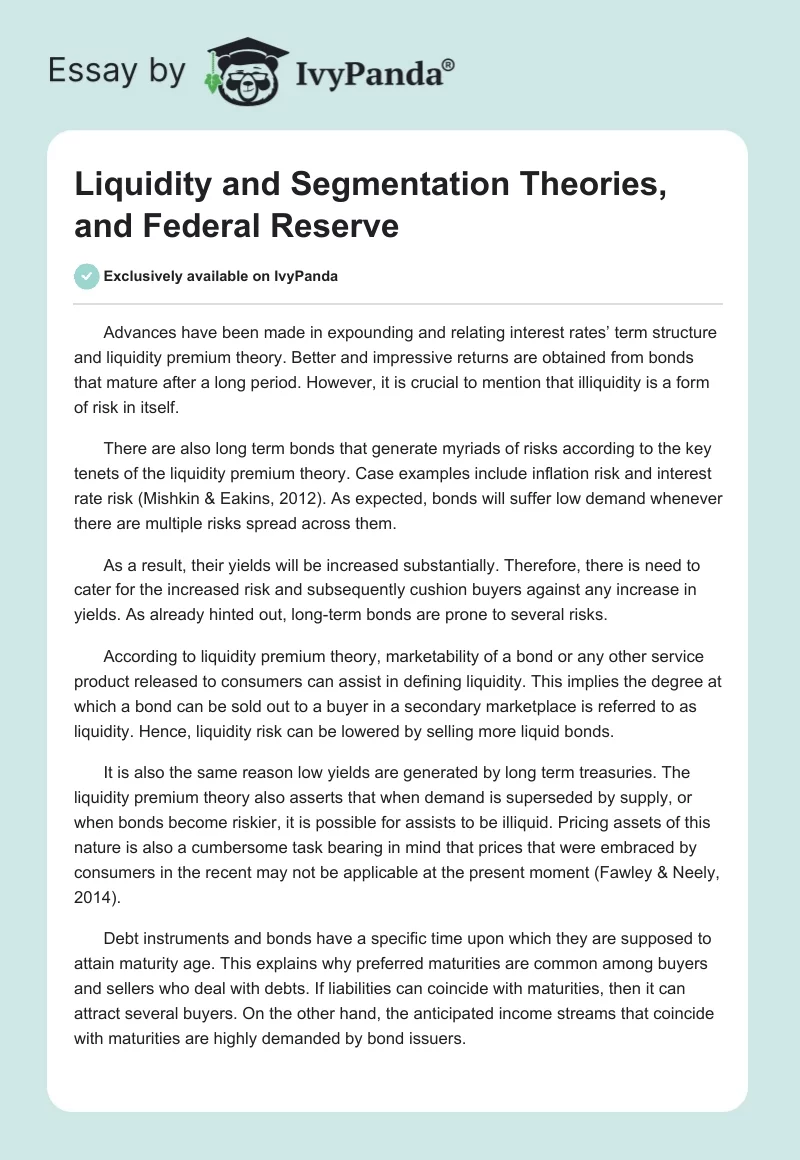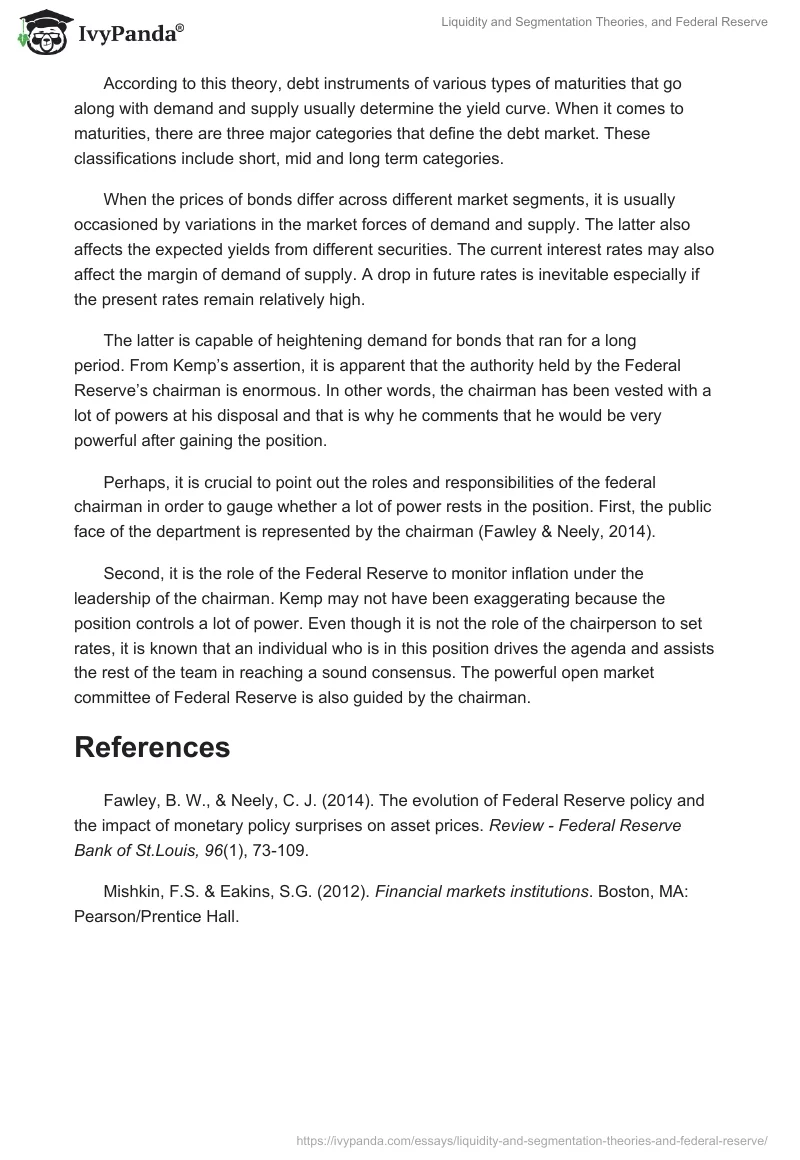Advances have been made in expounding and relating interest rates’ term structure and liquidity premium theory. Better and impressive returns are obtained from bonds that mature after a long period. However, it is crucial to mention that illiquidity is a form of risk in itself.
There are also long term bonds that generate myriads of risks according to the key tenets of the liquidity premium theory. Case examples include inflation risk and interest rate risk (Mishkin & Eakins, 2012). As expected, bonds will suffer low demand whenever there are multiple risks spread across them.
As a result, their yields will be increased substantially. Therefore, there is need to cater for the increased risk and subsequently cushion buyers against any increase in yields. As already hinted out, long-term bonds are prone to several risks.
According to liquidity premium theory, marketability of a bond or any other service product released to consumers can assist in defining liquidity. This implies the degree at which a bond can be sold out to a buyer in a secondary marketplace is referred to as liquidity. Hence, liquidity risk can be lowered by selling more liquid bonds.
It is also the same reason low yields are generated by long term treasuries. The liquidity premium theory also asserts that when demand is superseded by supply, or when bonds become riskier, it is possible for assists to be illiquid. Pricing assets of this nature is also a cumbersome task bearing in mind that prices that were embraced by consumers in the recent may not be applicable at the present moment (Fawley & Neely, 2014).
Debt instruments and bonds have a specific time upon which they are supposed to attain maturity age. This explains why preferred maturities are common among buyers and sellers who deal with debts. If liabilities can coincide with maturities, then it can attract several buyers. On the other hand, the anticipated income streams that coincide with maturities are highly demanded by bond issuers.
According to this theory, debt instruments of various types of maturities that go along with demand and supply usually determine the yield curve. When it comes to maturities, there are three major categories that define the debt market. These classifications include short, mid and long term categories.
When the prices of bonds differ across different market segments, it is usually occasioned by variations in the market forces of demand and supply. The latter also affects the expected yields from different securities. The current interest rates may also affect the margin of demand of supply. A drop in future rates is inevitable especially if the present rates remain relatively high.
The latter is capable of heightening demand for bonds that ran for a long period. From Kemp’s assertion, it is apparent that the authority held by the Federal Reserve’s chairman is enormous. In other words, the chairman has been vested with a lot of powers at his disposal and that is why he comments that he would be very powerful after gaining the position.
Perhaps, it is crucial to point out the roles and responsibilities of the federal chairman in order to gauge whether a lot of power rests in the position. First, the public face of the department is represented by the chairman (Fawley & Neely, 2014).
Second, it is the role of the Federal Reserve to monitor inflation under the leadership of the chairman. Kemp may not have been exaggerating because the position controls a lot of power. Even though it is not the role of the chairperson to set rates, it is known that an individual who is in this position drives the agenda and assists the rest of the team in reaching a sound consensus. The powerful open market committee of Federal Reserve is also guided by the chairman.
References
Fawley, B. W., & Neely, C. J. (2014). The evolution of Federal Reserve policy and the impact of monetary policy surprises on asset prices. Review – Federal Reserve Bank of St.Louis, 96(1), 73-109.
Mishkin, F.S. & Eakins, S.G. (2012). Financial markets institutions. Boston, MA: Pearson/Prentice Hall.


